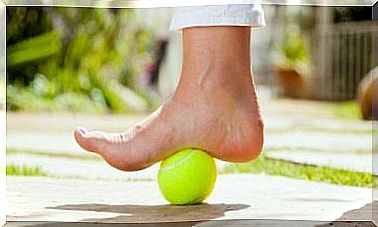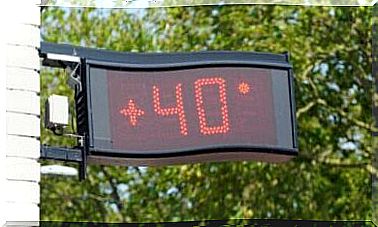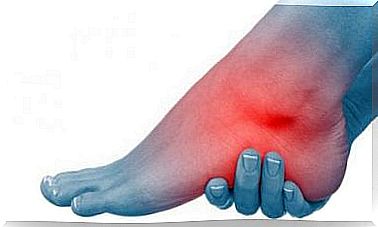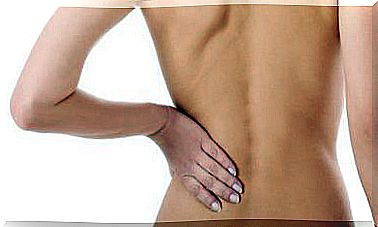Hyperhidrosis: Causes And Symptoms
When there is excessive sweating that is not associated with a situation that causes it, we end up in the case of hyperhidrosis. We will explain to you how it occurs and what are its possible treatments.

Hyperhidrosis is the situation where the human body sweats abnormally. It is excessive sweating that is not generated by a cause that causes it.
It is natural to expect increased sweating on hot days or when performing physical activity. With hyperhidrosis, excessive sweating does not take place because of these situations: it is constant.
Sweating is, to put it simply, water. Barely 1% of its components are salts. The body produces it in the sweat glands to regulate body temperature. It is the nervous system that orders, in normal situations, to sweat more or less.
Although all of the skin is sweating, the disorder is most evident in the hands, feet and armpits. These areas, if the humidity is stored for a long time, can become infected by generating a bad odor due to the decomposition of perspiration through the bacteria. This situation is called bromhidrosis.
It is calculated that approximately 2% of the world’s population can be diagnosed with the criteria of hyperhidrosis. It is common for the disorder to be familial, with parents and children (or siblings) suffering from it.
Causes of hyperhidrosis
Hyperhidrosis can, to put it simply, be attributed to two general causes: the primary or idiopathic and the secondary ones. The most common form of presentation responds to primary hyperhidrosis, that is, self-generated hyperhidrosis.
The primary type is called essential focal hyperhidrosis. The problem lies with the nerves that supply the sweat glands. In these people, these nerves are overactive and constantly stimulate sweat production. Even though sweat isn’t associated with heat or exercise, it can increase with stress.
The secondary causes of hyperhidrosis are varied. These are diseases that have, among their symptoms, increased sweating. Among them, we find:
- Hyperthyroidism and hypothyroidism: Thyroid hormones, as regulators of metabolism, can affect sweat production.
- Diabetes: in some people, it is the excessive sweating of the trunk that raises the suspicions about the possibility of suffering from diabetes.
- Coronary ischemic disease: During acute cardiac episodes, profuse sweating can be triggered by the stimulus that the pain generates on the sympathetic nervous system.
- Systemic infectious settings: partly because of fever, and partly because of the acceleration of metabolism during infection; the acute moment is usually accompanied by hyperhidrosis.
- Neuropathies: more specifically, diseases of the peripheral nerves and the sympathetic nervous system are capable of altering the innervation of the sweat glands.
Diagnostic criteria and symptoms
Any sweating that is perceived to be excessive cannot be diagnosed as hyperhidrosis. The medical community has established certain criteria that make it possible to diagnose the pathology.
The first inescapable condition is that one suffers for more than six months from profuse sweating without direct explanation. In other words, a sweating generated without episodes of heat or intense exercise sessions.
In addition to this characteristic, at least two of the following circumstances must be added:
- Impact on daily activities.
- Appearance of excessive sweat at least once a week.
- To have suffered from it before his 25th birthday.
- Have a loved one diagnosed with hyperhidrosis .
- Sweat symmetrically: for example, both armpits at the same time.
- Sweating while sleeping, on cool nights.
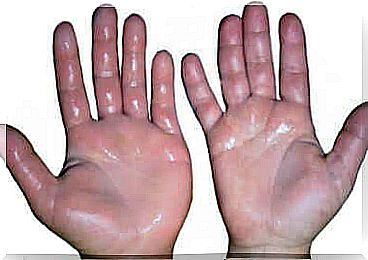
Treatments for hyperhidrosis
- Antiperspirants: this is the first measure taken in people with hyperhidrosis. In general, this is a treatment initiated by the patient himself before consulting the doctor. The component of antiperspirants that works the best is aluminum chloride. Adverse effects are skin irritation, especially in people with sensitive skin.
- Medicines: Although there are medicines to reduce sweating, they are not always recommended because of their side effects.
- Iontophoresis: the basis of this technique is electricity. Through the electric current, we manage to cancel the function of the sweat glands. The treatment requires a series of sessions to be effective and has no significant side effects. The flow of current is controlled and levels that are dangerous for the body are never reached.
- Botulinum toxin: the substance is injected directly into the area most affected by hyperhidrosis, to block the nerves that trigger the sweating stimulus. It can be injected into the armpits, hands and feet.
- Surgery: The surgical procedure par excellence for those who need it is endoscopic thoracic sympathectomy. It is reserved for very serious cases where the quality of life is very affected and where skin infections are very frequent due to the humidity generated. The process involves cutting a nerve in the sympathetic nervous system to stop the stimulus from the sweat glands.
